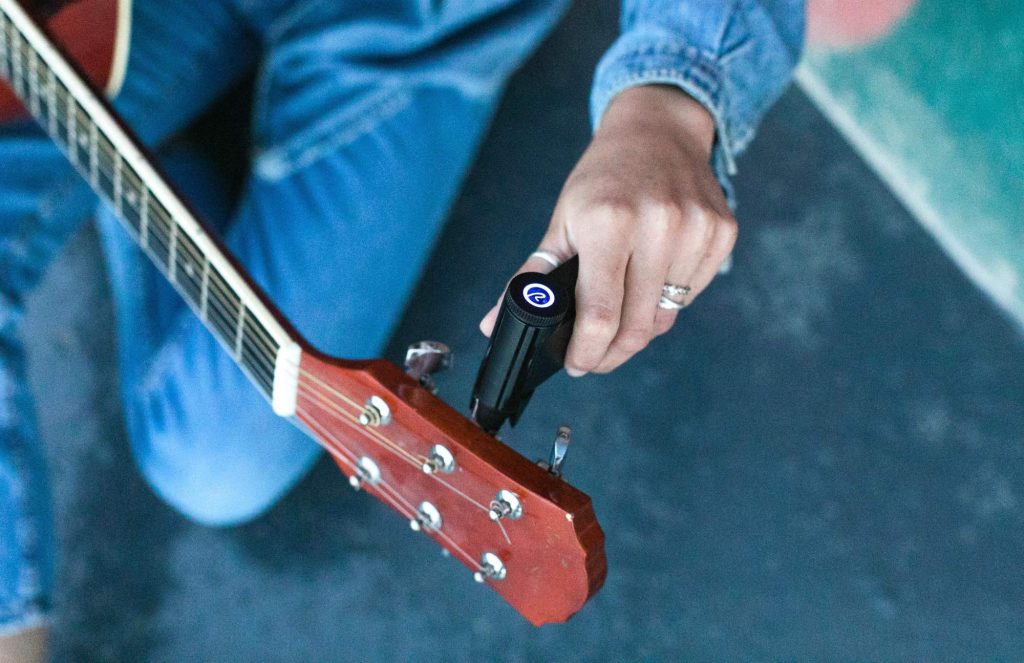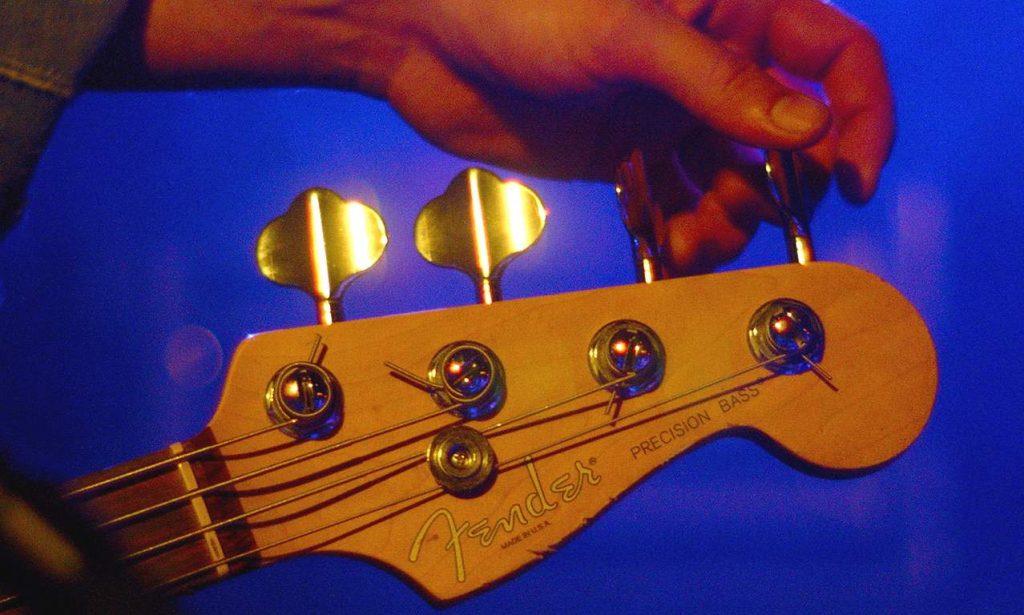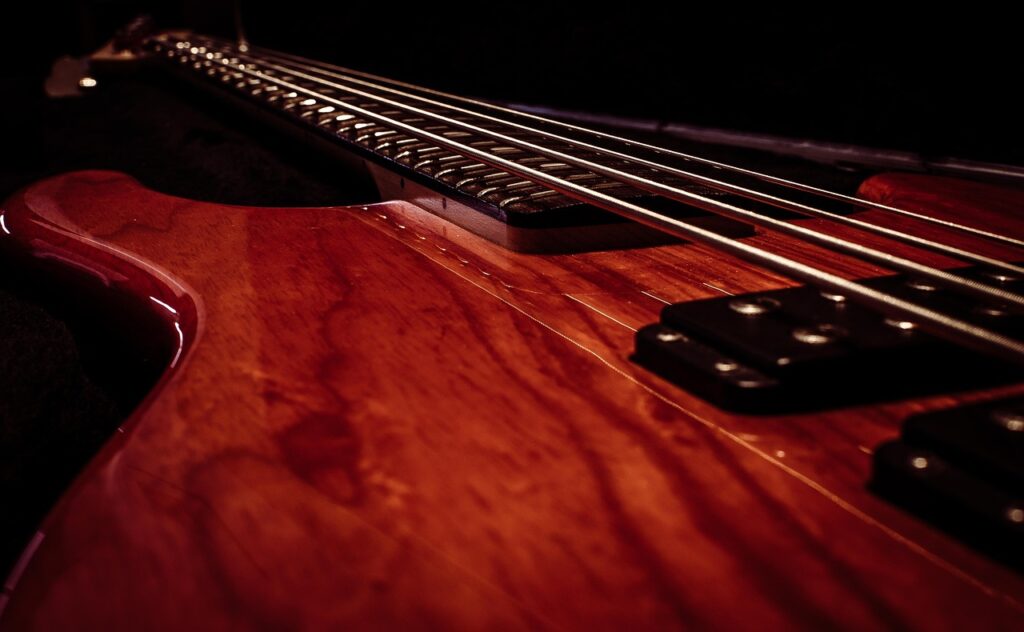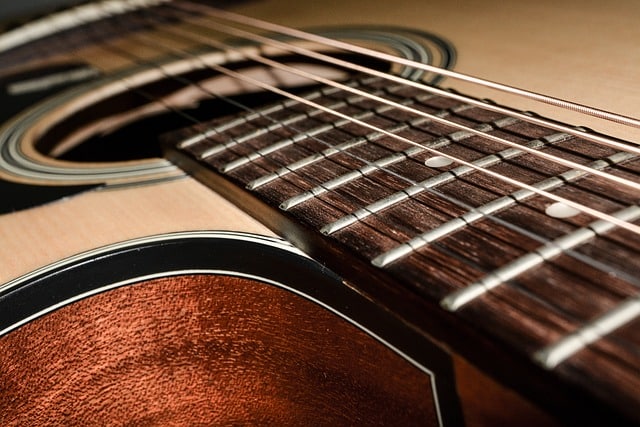The guitar is one of the most popular, and most dynamic, instruments for musicians today. Guitars of all stripes are versatile, meaning they can match a wide variety of genres and sounds of music. They’re also fun to play, and a great way of expressing yourself.
But, before you can do almost anything on a guitar, you need to learn how to tune a guitar.
It doesn’t matter how fast you’re playing or how many chords you know. If even one string is out of tune, your guitar won’t sound right. This article will go over how to tune a guitar, for a beginner. We’ll also cover how to tune electric guitars and other varieties of the instrument.
We’ll also give you some additional tools to help you in learning to tune your guitar so you can always play it when it sounds it’s best.
Guitar Tuning Basics

There are a few things you need to know before you can tune a guitar. Let’s start with the main reasons you’ll need to tune your guitar.
Why Do You Need to Tune Your Guitar Before You Play?
The most basic reason you need to tune your guitar is so that it sounds good when you play. But there are many reasons for your guitar to go out of tune between sessions, and even while you’re playing.
The first happens anytime you get new strings. The strings are essentially wire under tension, and even if your tuning pegs don’t slip, they will stretch out over time.
Many guitar players replace their strings as soon as they stop stretching, while others like the more mellow sound stretched strings provide.
It’s also common for your tuners, or tuning pegs, to slip. It’s especially likely for them to slip when you’re taking your guitar in and out of its case, or if you travel with your guitar.
Temperature and humidity changes also impact your guitar’s tuning. Everything from the strings to the neck, and even the body of the guitar, will flex and change dimensions when the weather changes. Those small changes in shape and dimension result in very different pitch when you strum the guitar.
Even if your guitar stays mostly in tune between sessions, you’ll probably have to make small adjustments to help it sound it’s best.
String Pitch or Standard Tuning
A standard 6-string guitar, whether it’s an acoustic guitar or an electric guitar, will be tuned EADGBE. That is, the first and sixth strings, the lowest and highest, will both be tuned to an E, one octave apart.
If you aren’t already familiar with musical notation, notes are written in 8 notes. ABCDEF & G. There are also half-steps between the notes, sharps (above the note) and flats (below the note).
You may eventually use non-standard tuning on your guitar, but you should stick to standard tuning while you’re getting starting. That’s because standard tuning gives you a lot of flexibility and sounds right to most people, whether they play guitar or not.
Standard tuning will help you, and your friends, evaluate your progress with the guitar since it will sound like the guitars they are used to.
Tune Up, Not Down
Another basic principle you need to know to properly tune your guitar is that you should always tune-up.
Your tuners, the three pegs on each side of the head of your guitar, can move in both directions. However, when you tune down, moving from a higher pitch to a lower pitch in order to hit the correct note, your guitar is more likely to go out of tune.
That’s because your string needs to be under a certain amount of tension to stay on the right note. When you relax that tension, it has more room to move and change.
So, if you need to tune down because your string is pitched too high, tune down past your desired note, and then back up to it. As you tune-up, you’ll add more tension to the string. That tension will help the string hold the note and let you play longer before you need to re-tune the instrument.
How to Tune a Guitar with a Tuner

There are several varieties of tuner you can buy for your guitar. Clip-on tuners are versatile and easy to use and work for most guitars. If you’re tuning an electric guitar, you may opt to use a tuner that plugs in directly to the guitar.
Alternatively, some tuners can be held in your lap next to the guitar, or directly on the body of the guitar. There are also numerous apps and online programs that will act as a digital tuner for your instrument, and we’ll talk more about that later.
Almost all tuners will represent the pitch with a swinging needle. In the middle, where the needle can point to it, you’ll see the note closest to your string’s current pitch. Remember, your strings should be tuned to E, A, D, G, B, and E.
Musical notes also cycle. A full set of notes A-G is an octave. The note that follows G, is A, in the next octave. The cycle then repeats.
This is important because your guitar strings can be several notes off from the desired note, so you need to know when you’re a note high or a note low.
Anytime you tune, you should start with your 6th string, the thickest, the low E. Gently strum the string with the tuner set up so that it can clearly hear the note. That may require some adjustment at first.
Strum slowly as you tighten the tuning until the needle on your tuner points directly at the note.
Repeat that process for each remaining string until they are all in tune.
Once each string is in tune, you should go back to the 6th string and make slight adjustments. Most likely, the neck of your guitar is under more tension than it was when you first tuned the instrument. That additional tension will have changed the tuning slightly.
It’s a good idea to make slight adjustments to every string, but not always necessary. You may only need to adjust the low E string if the other strings still sound good.
After checking each string, play a few chords to make sure it sounds right.
How to Tune a Guitar by Ear
Learning how to tune a guitar by ear comes with time. Eventually, you’ll be able to hear the low E you need to standard tune your guitar, but you can actually tune your guitar to itself, by ear, even before you can listen for standard tuning.
Guitars tuned to themselves will usually sound a little different than a standard tuned guitar, and may not sound as good. However, they will sound significantly better than a guitar which has not been tuned at all.
So, if you don’t have any tuning tools at all, it’s still a good idea to tune by ear even before you can tell which notes are the correct notes for standard tuning.
Fortunately, tuning a guitar without a tuner isn’t difficult. You’ll use the same basic process, start with the 6th string, work your way up to the first, and then go back down to the 6th string to fine-tune the instrument.
Only, this time, instead of using a tuner, you’re listening for what sounds like the correct note. As a beginner, you may just be going for a pure note, one that is neither sharp nor flat, or you may be trying to get an E.
Once you’ve tuned the 6th string, the rest of the guitar is easier. Hold down the 5th fret of the 6th string. Tune the 5th string, normally the A string, to match that note. Repeat that for every string until you’ve tuned the whole instrument.
Luckily, it’s always the 5th fret on a 6-string guitar, so you don’t have to worry about different fingering to get a good sound.
How to Tune a Guitar with Piano
Learning how to tune a guitar with a piano is simple. All you need to know is standard tuning technique, the standard tuning pitches, EADGB & E, and how to find those notes on the piano itself.
Fortunately, there isn’t much translation here. Play the note you want to tune to, and slowly adjust each string until the pitch matches, just like you did when you were tuning the guitar by ear.
Learning to hear the matching pitch will take some practice and can be a little easier using a piano than tuning by ear.
However, if you’re planning to play with a piano, it’s important that you tune to that piano rather than to a tuner. That’s because pianos can have subtle variations in pitch depending on how recently they’ve been tuned. You don’t want pitch variations between your guitar and the piano to conflict.
Tuning to the piano will help ensure that the two instruments sound good together and should be done every time you play together.
How to Tune an Acoustic Guitar
We’ve already looked at how to tune a standard 6-string acoustic guitar, but now let’s look at some variations.
One of the first variations you’ll want to know is how to tune a guitar to open G. This tuning was popularized with Blues guitar but can be used for a wide variety of genres. All you need to do is tune the 6th (low E) 5th (A) and 1st (high E) strings down a whole step.
A whole step means going to the next lower pure note.
You may also want to learn to tune a guitar to drop C or drop D. We’ll leave that to you, however, since they’re less common tuning variations.
How to Tune a 12-String Guitar
One thing you need to remember when learning how to tune a 12-string guitar is to be a little gentler and tune most slowly. There’s a lot more tension on the guitar, and it takes a little more finesse to get this tuning correct.
You should also remember that your high string G is prone to breaking, so take extra care when you’re tuning that string.
The first 8 strings on a 12-string guitar are tuned 1 octave apart, so high E and low E, high A and low A, and so on. The last 4 strings are tuned in unison, so you’ll have two B strings on the same octave, and two high E strings.
How to Tune a 4-String Guitar
Also called cigar box guitars, 4-string guitars want to be tuned to open G. Depending on your preferences, this may mean tuning the strings DGBD or DGBE. While these two will sound slightly different, both are considered standard tunings of a 4-string guitar. Choose the one you prefer or more between them for slightly different sounding music.
Since you already know how to tune a 6-string guitar, learning how to tune a 4-string guitar should be simple.
How to Tune an Electric Guitar
An Electric guitar can be tuned much like an acoustic guitar, excepting that, unlike an acoustic guitar, you can use a plugged-in tuner. Using an electric specific tuner may give you more accurate results, but otherwise, tuning an electric guitar isn’t any different from tuning an acoustic guitar.
It may be worth playing with alternate tuning patterns on your electric guitar, however, since they sound considerably different on an electric than they do on an acoustic guitar.
How to Tune a Bass Guitar

A standard 4-string bass guitar should be tuned, EADG, working from 4th string to 1st string. However, just like any other guitar, you can tune a bass guitar by ear, or tune it to another instrument.
Like any alternate tuning, tuning this way will sound different, but can lend a unique feel to your music, or a particular song.
Online Guitar Tuners
There are lots of online guitar tuners to choose from, but the quality can vary quite a bit. It’s a good idea to look for an online tuner that’s either produced by the same manufacturer that made your guitar, since they’ll be most familiar with how those guitars should sound, or that comes from a major music company or school.
Either way, those sources will have a vested interest in helping you, and your guitar, sound good.
There are plenty of free guitar tuners out there, so we hesitate to recommend a paid online guitar tuner, but, if there’s one that has features or benefits you want, go ahead and use it.
In Conclusion
That should be everything you need to know to get started. You know to tune a guitar, several variations on guitar tuning, and even a few alternate tuning patterns to experiment.
Now it’s time to get the fingering and strumming practice in that will turn you into a real legend with your new instrument!
















